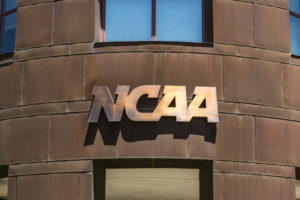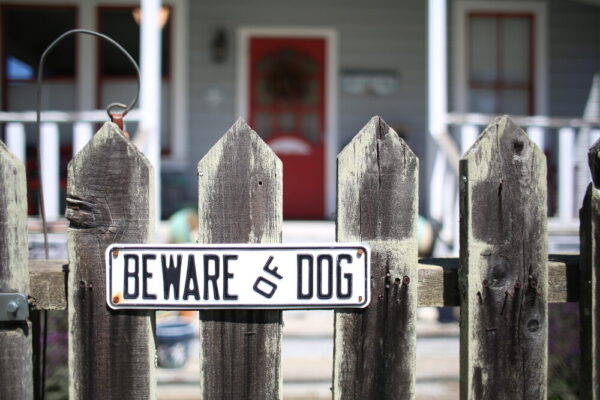More details have emerged about the tragic train crash in Trenton, Missouri that killed three people. Several news outlets, including the Kansas City Star, ABC affiliate KTVO, and the St. Joseph News-Press have provided additional information.
The Kansas City Star reported that the three killed were struck by a Burlington Northern Santa Fe (BNSF) freight train while the other sources reported that the train was Union Pacific.
TRENTON, Mo. | Three people were killed this morning when a car was struck by a Burlington Northern freight train.
The accident happened shortly before 11 a.m. in Trenton, in northwest Missouri. Heavy snow had fallen in the region, but the Missouri Highway Patrol says weather was not a factor.
All three victims were from Trenton. The patrol identifies them as the car’s driver, 24-year-old Nancy N. Groves, and her two passengers, 30-year-old Adam K. Romesburg and 28-year-old Nina A. Spencer.
The patrol says the accident happened at an uncontrolled railroad crossing. The car came to rest about 300 feet down the track.
Our thoughts and prayers continue to go out to the families and friends who lost their loved ones. They have our heartfelt condolences following this tragic event.
From comments following the Kansas City Star report, it appears this train-vehicle crash occurred at a dangerous railroad crossing:
Commenter "justgottasay" said that train often park near this crossing, which confuses motorists who cannot tell if a train is moving or parked because of the sight-lines. This commenter said the road is highly traveled and "A)the train was likely not to have sounded its horn..or if so for not long [and] B) the visibility night or day is not good in this particular spot because the trains are constantly stopped near there and it is hard to tell if they are moving . . ."
There were also comments from railroad employees.
kz900jimmy wrote: "as a conductor, my heart goes out to the famalies, as well as the crew. if that crossing had gates, this could have possibility been prevented."
TigerRecneck wrote: ". . . And as for the "Profits before safety" statement, the dude is dead on. They preach all day about safety, but if it’s gonna cost them money, it goes by the wayside. everybody at any RR know it."
Commenters at KMBC.com also indicated this was a very dangerous railroad crossing:
pepper wrote: ". . . . There are No lights to flash, no arms to come down, nothing here. A man/father of 2 lost his life at this very spot years ago . . . ."
andrewstuart wrote: "I used to live near that crossing. There has been a need for a crossing gate there for years. This isnt the first time someone has died at this intersection."
Railroad companies are responsible making sure their train crossings are safe. That means the crossings have proper sight lines and visibility that allow drivers to see approaching trains, that trees and vegetation are cut back, that railroads do not park trains near the crossing (that would confuse drivers), that signals and gates are working properly, and that train crews sound a warning with the train’s horn or whistle as the train is approaching.
There have been far too many railroad crossing deaths in Missouri. Missouri was one of the top 10 deadliest states for railroad crossing accidents in 2008. There have been several train-vehicle collisions in just the past few months:
-
Last week: Kristy Willis was killed in a railroad crossing accident in Webster County, Missouri.
-
Late November: David Griffit and a passenger were injured when their pickup truck was hit by a Union Pacific train in Marshall, Missouri.
-
Early November: Scotty Davis was killed when his vehicle was struck by a train in Campbell, Missouri.
-
October: Mary Redmond and John South were killed when their vehicle was hit by a locomotive in Amsterdam, Missouri.
These train-vehicle collisions are a tragic reminder of how dangerous railroad crossings can be. In the last 10 years, there have been more than 30,000 railroad crossing accidents and more than 3,600 train accident deaths.
The news accounts give conflicting information as to the railroad company involved in this collision. Some reports indicate Burlington Northern Santa Fe (BNSF) railroad and some reports indicate Union Pacific railroad.
Railroad companies sometimes try to cover up the true cause of a railroad crossing collision in order to avoid liability. In October, Burlington Northern Santa Fe (BNSF) railroad was hit with a $4 million penalty — on top of a $21.6 million jury verdict — because of its "staggering" pattern of misconduct that included destroying evidence in an attempted cover-up of its role in the deaths of four young people who were killed at one of its railroad crossings.
The Court found that BNSF destroyed some evidence, fabricated other evidence, interfered with the investigation and purposefully lied and advanced misleading facts in order to conceal the truth.
Railroad companies should be held accountable for dangerous railroad crossings that injure and kill. Is there a different set of rules for railroad companies than for everyone else?
Railroad companies need to do more to prevent these tragic collisions that kill. There are many different causes of railroad accidents and many ways for train companies to help prevent them.
These train accidents can have many causes, including:
Failure of the railroad company to install proper warnings, such as lights, alarms (crossing bells) or a functioning crossing gate
Defective warnings — inoperable lights, bells or gates
Improper sight lines that prevent a vehicle’s driver from seeing an oncoming train until it is too late
Failure to properly maintain the crossing — such as allowing overgrown trees, vegetation and other foliage to obstruct or hide an oncoming train
Improperly parking a train at or near a crossing — this not only hides an oncoming train from view, but gives motorists a false sense of safety in seeing a parked train at the crossing
Failure to sound the train’s horn or whistle at or near the crossing
Other negligence that may appear on the train’s data recorder or video recorder
It takes a skilled team of investigators and experts to identify critical information.
You can learn more about how to protect yourself at railroad crossings by visiting our railroad safety blog or web site.
Learn more and become a fan of Langdon & Emison on Facebook.

Brett Emison is currently a partner at Langdon & Emison, a firm dedicated to helping injured victims across the country from their primary office near Kansas City. Mainly focusing on catastrophic injury and death cases as well as complex mass tort and dangerous drug cases, Mr. Emison often deals with automotive defects, automobile crashes, railroad crossing accidents (train accidents), trucking accidents, dangerous and defective drugs, defective medical devices.










Comments for this article are closed.